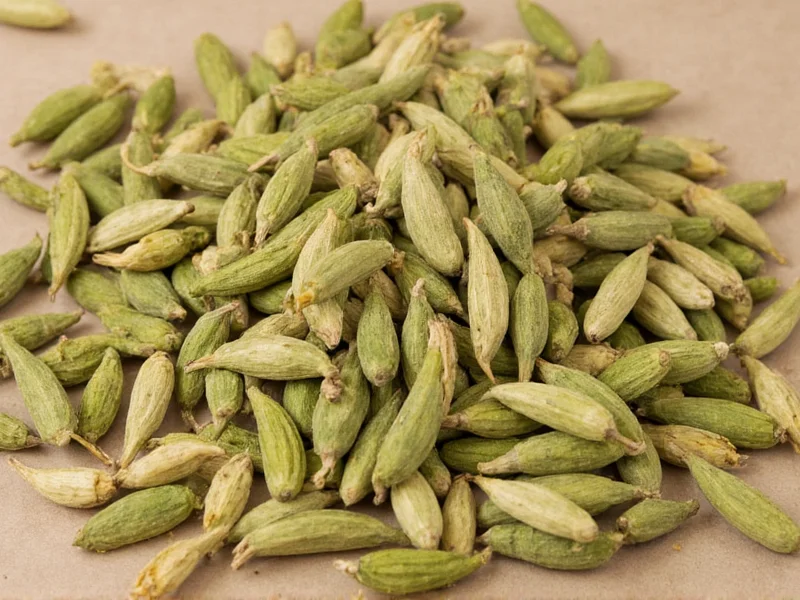Understanding cardamom conversion ratios is essential for achieving authentic flavors in baking and cooking. Whole cardamom pods contain seeds that are significantly more aromatic and potent than commercially ground versions. When substituting between forms, you need accurate measurements to maintain recipe balance.
Why Cardamom Conversion Ratios Matter
Cardamom's complex citrusy, floral notes can make or break dishes like Scandinavian pastries, Indian curries, and Middle Eastern rice dishes. The difference between whole pods and ground cardamom isn't just about measurement—it's about flavor chemistry. Whole pods preserve essential oils that evaporate quickly once ground, making fresh grinding crucial for optimal taste.
Cardamom Pods to Ground Conversion Chart
| Whole Cardamom Pods | Freshly Ground Cardamom | Equivalent Pre-Ground Cardamom |
|---|---|---|
| 10-12 pods | 1 teaspoon | 1¼ teaspoons |
| 30-36 pods | 1 tablespoon | 1½ tablespoons |
| 1½ pods | ¼ teaspoon | ⅓ teaspoon |
| 3 pods | ½ teaspoon | ⅔ teaspoon |
Notice the difference between freshly ground and pre-ground measurements. Pre-ground cardamom requires slightly more quantity because it loses 20-30% of its volatile oils during commercial processing and storage. For the most accurate cardamom pod to ground conversion for baking, always use freshly ground seeds.
Maximizing Flavor in Your Conversions
Several factors affect your cardamom measurement conversion for recipes:
- Pod freshness: Plump green pods with strong aroma yield more potent seeds
- Grinding method: Mortar and pestle preserves more oils than electric grinders
- Seed extraction: Crush pods gently to avoid bitter husk particles in your grind
- Recipe timing: Add freshly ground cardamom late in cooking to preserve volatile compounds
Step-by-Step Grinding Process
For perfect substituting cardamom pods for ground cardamom in recipes:
- Count your required pods (e.g., 12 for 1 teaspoon ground)
- Place pods on cutting board and gently crush with flat knife side to split husks
- Extract small black seeds, discarding fibrous husks
- Grind seeds using mortar and pestle or spice grinder for 20-30 seconds
- Measure immediately—don't let ground spice sit before use
Recipe Substitution Guidelines
When adapting recipes that call for pre-ground cardamom:
- Reduce quantity by 20% when using freshly ground from pods
- For Scandinavian baking (like cardamom buns), use 10 pods per teaspoon called for
- In Indian curries, add whole pods early then remove before serving for subtle flavor
- For Middle Eastern coffee, use 3 pods per cup for authentic strength
Understanding these nuances in cardamom seed to ground measurement prevents overpowering dishes. Many home cooks make the mistake of using equal pod-to-ground ratios, resulting in either bland or overwhelming cardamom flavor.
Storage Tips for Maximum Freshness
To maintain conversion accuracy over time:
- Store whole pods in airtight containers away from light and heat
- Use within 6 months for optimal flavor (vs. 3 months for pre-ground)
- Freeze excess pods for up to 1 year without significant flavor loss
- Never store ground cardamom—grind only what you need immediately
Professional chefs emphasize that proper how to grind cardamom pods at home technique affects more than just measurement—it transforms the spice's chemical profile. The mechanical action of grinding releases different flavor compounds than commercial processing, creating a brighter, more complex profile ideal for delicate pastries and aromatic rice dishes.











 浙公网安备
33010002000092号
浙公网安备
33010002000092号 浙B2-20120091-4
浙B2-20120091-4